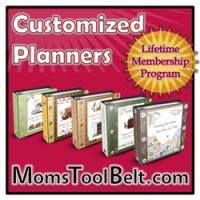Helpful Home Store Tips
by Shelf Reliance Staff 11/13/09
•Be Practical. Store the food you eat and eat the food you store. It doesn’t make sense to buy food storage that your family isn’t accustomed to eating. Many items, such as wheat, flour, oats, and dried milk are needed to sustain life and are already included in many of the foods that we enjoy each day. Become familiar with recipes that include ingredients contained within your food storage. This will not only enable you to become familiar with the preparation of foods within your food storage, it will also allow you to rotate your food in a timely manner.
• Store Foods Properly. Quality is best maintained by minimum exposure to light, heat, moisture, and air. Items stored in a basement will last much longer than in a pantry or garage. Store food on shelves or on a raised platform rather than directly in contact with concrete floors or walls. Avoid storing items next to certain products such as soaps or fuels; this will prevent the spread of odor and other possible contaminants.
• Temperature. Where possible, always store your food indoors. Temperature has the largest affect on food storage. Canned goods will store 2 to 3 times longer at 70°F than they will at 90°F. Most dry goods store indefinitely below 70°F. Temperature affects nutrition, texture, and taste.
• Moisture. Dry goods should contain less than 10% moisture. The more a container is opened, the more moisture is introduced. The humidity in the air the day food is dry packed or home canned can also affect storage life. Weevil cannot grow in grain with less than 10% moisture. For a maximum shelf life, non-fat dry milk should have no more than 2.8% moisture.
• Light. Store foods in opaque containers or dark cupboards. Light fades colors, destroys vitamins, and speeds the rancidity of fats.
• Air. Containers should have airtight seams and lids. If in doubt, use duct tape as an additional seal. Plastic buckets with rubber gaskets are airtight if the gasket has not been damaged.
• Use Variety. Use a variety of fruits, vegetables, grains, protein sources, and dairy products to obtain balanced nutrition. This will provide greater flexibility in cooking.
• Use Labels. Label your containers with the date of purchase.
• Rotate Your Storage. Rotate as many items as you can by using food storage at least twice a week. This will allow for a complete rotation of a year’s food supply every three years. It will also help your family become accustomed to the items you have stored.
• Store Water. Be sure to store a large amount of water (at least 14 gallons per person for a two week supply). Soda and juice bottles will work for water storage as will larger food-grade plastic containers. For larger quantities, 5, 15, 30, and 55 gallon storage drums can be used. Water will need to be treated before storage. FEMA recommends treatment with 4 drops of bleach per quart of water. Water supplies should be replenished yearly.
• Store Non-Food Items. Food storage is only part of emergency preparedness. Don’t forget to store non-food items such as medicines, toiletries, soap, cleaning supplies, paper products, laundry detergent, and clothing.
• Grow a Garden. For easy access to fresh produce, grow a garden. Also, store and rotate seeds. If you don’t have garden space, try using pots to grow vegetables.
It's easy to keep up with the great sales and recipes! Just subscribe to stay up to date!
• Store Foods Properly. Quality is best maintained by minimum exposure to light, heat, moisture, and air. Items stored in a basement will last much longer than in a pantry or garage. Store food on shelves or on a raised platform rather than directly in contact with concrete floors or walls. Avoid storing items next to certain products such as soaps or fuels; this will prevent the spread of odor and other possible contaminants.
• Temperature. Where possible, always store your food indoors. Temperature has the largest affect on food storage. Canned goods will store 2 to 3 times longer at 70°F than they will at 90°F. Most dry goods store indefinitely below 70°F. Temperature affects nutrition, texture, and taste.
• Moisture. Dry goods should contain less than 10% moisture. The more a container is opened, the more moisture is introduced. The humidity in the air the day food is dry packed or home canned can also affect storage life. Weevil cannot grow in grain with less than 10% moisture. For a maximum shelf life, non-fat dry milk should have no more than 2.8% moisture.
• Light. Store foods in opaque containers or dark cupboards. Light fades colors, destroys vitamins, and speeds the rancidity of fats.
• Air. Containers should have airtight seams and lids. If in doubt, use duct tape as an additional seal. Plastic buckets with rubber gaskets are airtight if the gasket has not been damaged.
• Use Variety. Use a variety of fruits, vegetables, grains, protein sources, and dairy products to obtain balanced nutrition. This will provide greater flexibility in cooking.
• Use Labels. Label your containers with the date of purchase.
• Rotate Your Storage. Rotate as many items as you can by using food storage at least twice a week. This will allow for a complete rotation of a year’s food supply every three years. It will also help your family become accustomed to the items you have stored.
• Store Water. Be sure to store a large amount of water (at least 14 gallons per person for a two week supply). Soda and juice bottles will work for water storage as will larger food-grade plastic containers. For larger quantities, 5, 15, 30, and 55 gallon storage drums can be used. Water will need to be treated before storage. FEMA recommends treatment with 4 drops of bleach per quart of water. Water supplies should be replenished yearly.
• Store Non-Food Items. Food storage is only part of emergency preparedness. Don’t forget to store non-food items such as medicines, toiletries, soap, cleaning supplies, paper products, laundry detergent, and clothing.
• Grow a Garden. For easy access to fresh produce, grow a garden. Also, store and rotate seeds. If you don’t have garden space, try using pots to grow vegetables.
















0 comments:
Post a Comment